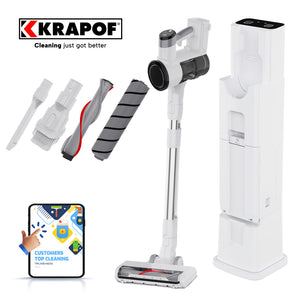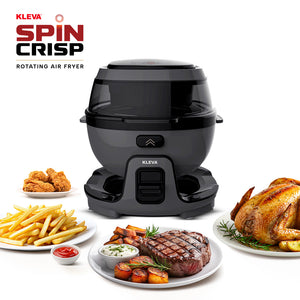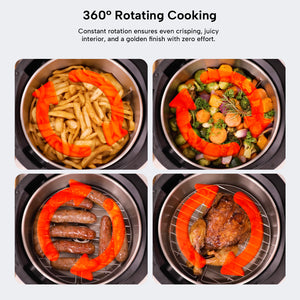Knives make exceptionally versatile companions to chefs of all varieties, allowing them to cut, trim and fillet their way around the kitchen with five-star finesse. Of course, knives alone could never make a master out of anyone, but they can easily elevate a discerning chef’s craft with quality cutting ability and foolproof simplicity. Getting the very best knife you can find is a worthy goal every proud cook can aspire to, but you’ll need to know where to start.
For western kitchens, chef knives are fairly ubiquitous - and for good reason! However, there are many other varieties to choose from besides these. Before you begin your own search for the ultimate cutting tool to add to your cabinet, you should probably know what a high-quality knife looks like.
What makes a knife valuable
Professional chefs demand several sharp, steel blades in their armoury, but the traits that they covet most of all – durability, simplicity, and affordability – can make them partial to a particular knife. Here’s why:
Exceptional durability
A knife that does not demand too much care or attention from you can be of great use, not to mention making it possible for you to be far more flexible in the kitchen. High-quality knives offer this kind of strength and longevity, ensuring you are always focused on fixing up your next meal instead of babysitting your cutlery.
Easy maintenance
Although the factory-fresh, crisp edges of your new knives are not likely to last longer than a year or so, you can certainly keep them cutting well into the foreseeable future. Purchasing a proper sharpening tool goes a long way, as do careful cleaning and storage habits. On the whole, honing your blades is a necessary part of keeping them functional, but finding a blade that requires less attention to stay in tip-top shape can be a great boon to your productivity.
Great price
Price points for high-quality knives are directly influenced by the type of steel they are made from – better steel makes for a steeper price tag. Some sources swear by the 50 to 100 USD range for functional knives, while others encourage splurging to get the highest quality options on the market. For a great price, you may need to pass up the high carbon, stainless steel options and stick with standard stainless varieties, but these may surprise you with excellent, long-lasting sharpness. Interestingly, some experts point out that a cheap knife can be made more effective with a high-quality sharpening tool and that no expense should be spared on this detail if you opt for a pricier knife.
A few common types of kitchen knives
Knives abound in all facets of daily life. From soldiers’ combat knives to juggling knives and pocketed switchblades, the world knows no shortage of these deceptively simple tools. However, knives fit for kitchen use have carved out their own quietly expanding niche of forms and functions you might not be familiar with. Here are a few of the most common kinds you can try out for yourself:
Chef knives
Longer than paring knives yet smaller and arguably more maneuverable than cleavers, common chef knives are known for their simple usefulness. These knives make it easy for cooks of all kinds to cut large amounts of almost anything without reaching for something more suitable. However, they excel at general kitchen cutting tasks involving veggies, meat and cuts without too much bone in them. A clever chef could find a way to use this versatile knife for practically any task the kitchen can throw at them.
Bread knives
Round out your kitchen roster with a bread knife if you plan on preparing plenty of doughy delicacies. These knives feature a serrated blade better suited to slicing up stale loaves than even a chef knife could hope to be.
Slicer knives
These resemble fillet knives with their long, slender shapes and razor-sharp edges. Perfect for producing neat meat slices and more, a slicer should serve you well if you choose to pick one up.
Paring knives
All the same, if you’re enquiring 'what is a sliver knife employed for?' or when to pick out a sliver knife over other kitchen knives or tools, this usher will assist. The standard way to apply a shaving knife is to cut towards your organic structure and go your pollex along the piece of nutrient you’re cutting, keeping it out of the way of the knife’s leaf blade. The advantage of a shaving knife is in its little size, which gives you more than control to do little, delicate cuts compared to a big chef’s knife.
If you are looking to do little delicate cutting jobs around the kitchen, then a common paring knife is bound to be right up your alley. These knives never take up much space and are perfect for coring apples, carving into melons, and the like. Their small size is actually their biggest strength as they enable you to achieve all sorts of things a cleaver-sized cutter cannot.
Cleavers
Cleavers may be big, but that doesn’t mean they can’t be put to delicate use in making amazing meals. Mind you, these knives really are meant for expeditiously chopping up heavy hunks of meat, but they can also play a vital role in crushing aromatic additions like garlic and are even used handle-side down to grind up spices. As turncoat spatulas, they become even more useful, and particularly industrious cooks have taken to using the backs of these knives to tenderize meat too.
Choose wisely
There are more knives out there for you to choose from, but the options covered above can help you to achieve almost anything you have in mind where cooking is concerned. Choose your next knife wisely and give our KlevaCut line a go for the utmost in kitchen cutting precision.

 Discounts are applied at checkout
Discounts are applied at checkout





















